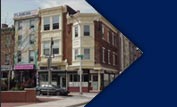- Home
- About
- News
- Tax Reform
- Ethics Reform
- Budget Reform
- Reformer’s Roundtable
- Contact Us







City Borrowing Millions of Dollars May Make Little Sense
 City Council and the Mayor are currently considering a measure to issue debt so the city can spend $150 million to support arts and cultural facilities and improve business corridors in Philadelphia. City residents will then have to pay approximately $12 million per year for the next 25 years to fund these improvements. Given the city’s infinite needs and limited resources, it is wise to pause and consider if this proposal makes fiscal sense for the city, if this is the best way the city can support arts and culture, and if the process we are using to make these decisions works for the citizenry.
City Council and the Mayor are currently considering a measure to issue debt so the city can spend $150 million to support arts and cultural facilities and improve business corridors in Philadelphia. City residents will then have to pay approximately $12 million per year for the next 25 years to fund these improvements. Given the city’s infinite needs and limited resources, it is wise to pause and consider if this proposal makes fiscal sense for the city, if this is the best way the city can support arts and culture, and if the process we are using to make these decisions works for the citizenry.
The proposal to borrow $150 million for capital projects associated with culture and commercial corridors comes at a time when the city’s long-term indebtedness is problematic. Recent borrowings to fund the city’s stadium-finance contribution and the Mayor’s Neighborhood Transformation Initiative have increased the city’s long-term debt to the point where the city is spending about 15 cents for every dollar raised on long-term obligations. That’s one reason to be concerned. Meanwhile, existing city facilities are in need of repair. That’s another reason to be worried. Creating more debt to pay for additional spending while the city’s infrastructure is crumbling is a questionable program.
The head of the city’s state-appointed fiscal watchdog agency has likened this strategy to building an addition to a house that desperately needs a new roof. In its January 2006 report, Reversing the Trend of Doing Too Little with Too Much, the Pennsylvania Intergovernmental Cooperation Authority noted that:
“The City could soon face a rapid deterioration in the condition of its facilities at the same time that it sees its financial flexibility eroded. The City faces these twin problems because for the last five years, its infrastructure investment has dropped rapidly while its fixed costs have skyrocketed.”
Since the city cannot afford to meet every need, we must prioritize. The Mayor’s proposed borrowing would increase the city’s fixed costs for years to come without addressing key infrastructure needs. It is not clear at all that the proposed spending should be a higher priority than restoring older recreation centers, repairing dangerous fire stations, or repaving pitted city streets.
A recent report released by the Greater Philadelphia Cultural Alliance suggests that it is not even clear that the proposed borrowing is the best way we can use city funding to support arts and culture. The report, titled Portfolio, touts the strength of the arts and culture industry in the region, but notes that many organizations in the region are struggling financially. The report finds that roughly half of organizations surveyed operate with a deficit, meaning that they do not generate enough revenue to meet their day-to-day expenses. Local government in the region provides less than 3.0 percent of the revenues for these organizations. By comparison, local government funds in the Charlotte, Denver, New York and San Francisco all provide at least three times that percentage.
We can and must support arts and culture in Philadelphia for economic, civic, and educational reasons. But, while the Mayor’s proposed borrowing would increase spending for arts and cultural organizations for capital projects, the move will likely create additional operating costs in maintaining these capital assets for organizations that may already be fiscally stressed. It is not reasonable to assume that the needs of the city’s arts and cultural institutions are all either capital or operating in nature. This suggests that more flexible funding streams could be more beneficial. For example, rather than borrowing funds and targeting spending to capital projects for a certain few institutions this year, the city could set aside funds annually in the amount of the anticipated loan repayment costs to help meet the needs of arts and cultural organizations on an ongoing basis. In addition to providing flexibility for the institutions, the city would gain additional financial flexibility by avoiding new fixed costs.
With regard to the process to consider all these issues, citizens should demand more openness and more considered deliberation. Should the City Council elect to support the Mayor’s proposal, it would be beneficial to establish clear criteria for the allocation of funds and mechanisms to track the outcomes created through these expenditures. The bill before Council currently includes a description of what types of information will be considered in allocating funds, such as the quality of market conditions in the commercial corridor or the administrative capacity of an arts or cultural institution. But it is currently unclear what outcome this borrowing is supposed to produce, or how we will know if those goals have been reached. The bill does not even articulate exactly where all of the money will go.
What is clear is that the city can ill afford to commit to new fixed costs without addressing lingering infrastructure problems. Similarly, it is not clear that the needs of the arts and cultural community are being met by this proposal. Finally, the lack of transparency and objective justification for this spending is worrisome in a city that is challenged to spend its scarce resources wisely. Given the importance of this spending to both the local economy and the quality of life in Philadelphia and its surroundings, it is incumbent upon city policy makers to ensure that we make a wise decision.
